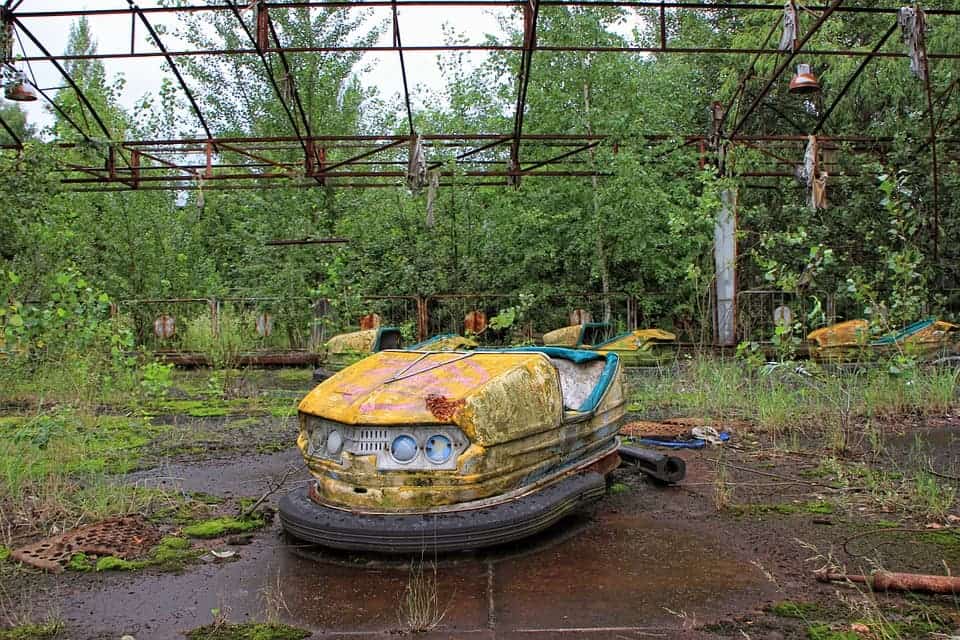Chernobyl, the worst nuclear accident in human history, is about to get a complete makeover. A new, almost completed project, will provide the local grid with one megawatt of renewable solar power.

The nearby city of Pripyat has become a ghost town. Over 100,000 people were evacuated in 1986 when Chernobyl exploded. Image via Pixabay.
The Chernobyl Disaster was one of mankind’s worst fears. Nuclear power, this tremendous tool, backfired — ironically, not because of a scientific or technological failure, but due to an operating failure. Contamination from the Chernobyl accident was scattered irregularly depending on weather conditions, affecting virtually all of Eastern Europe and going as far as Switzerland or Greece. As for Pripyat, the nearby town which had a population of about 50,000 people, it was completely evacuated, becoming a ghost town. Chernobyl was sealed and the area around it became a black hole in the middle of Ukraine.
Now, all that might change.
Engineers have installed 3,800 photovoltaic panels across an area the size of two football pitches, just 100 meters from the containment zone — the giant concrete sarcophagus which covered the nuclear reactor.
That’s enough to fulfill the needs of a small town of about 2,000 homes, and eventually, Rodina (the company behind this project) says the area could generate 100 times more energy.
Rodina isn’t the only company interested in investing in Chernobyl. In 2016, two Chinese companies announced a plan to build a huge 1 GW solar farm in Chernobyl’s exclusion zone, although little progress seems to have been made. The French company Energie SA also announced plans to conduct a pre-feasibility study for a billion-euro solar plant near Chernobyl, according to Ars Technica.
The reasoning is fairly simple: first of all, the land is cheap, for obvious reasons — it’s literally a radioactive wasteland. Secondly, Ukraine is offering “relatively high feed-in tariffs,” which makes investing in the area much more attractive. Also, the area is already connected to the grid, thanks to the previously existing infrastructure from the nuclear power plant. It’s still extremely challenging to build anything there, but at the end of the day, it’s not impossible. The new containment dome, completed in 2016, helps greatly by preventing further contamination from the nuclear plant.
For the Ukrainian authorities, it also makes a lot of sense. It’s not like you can use the area for anything else — the area is still radioactive, and the soil is greatly contaminated, making agriculture impossible for thousands of years in the future.
Unlike other projects, Rodina’s $1.2 million investment is nearing completion. It hasn’t started producing electricity yet, but we can probably expect to see it kick off sometime this year. There’s some poetic justice in having Chernobyl once again produce energy — but this time, from the Sun.









